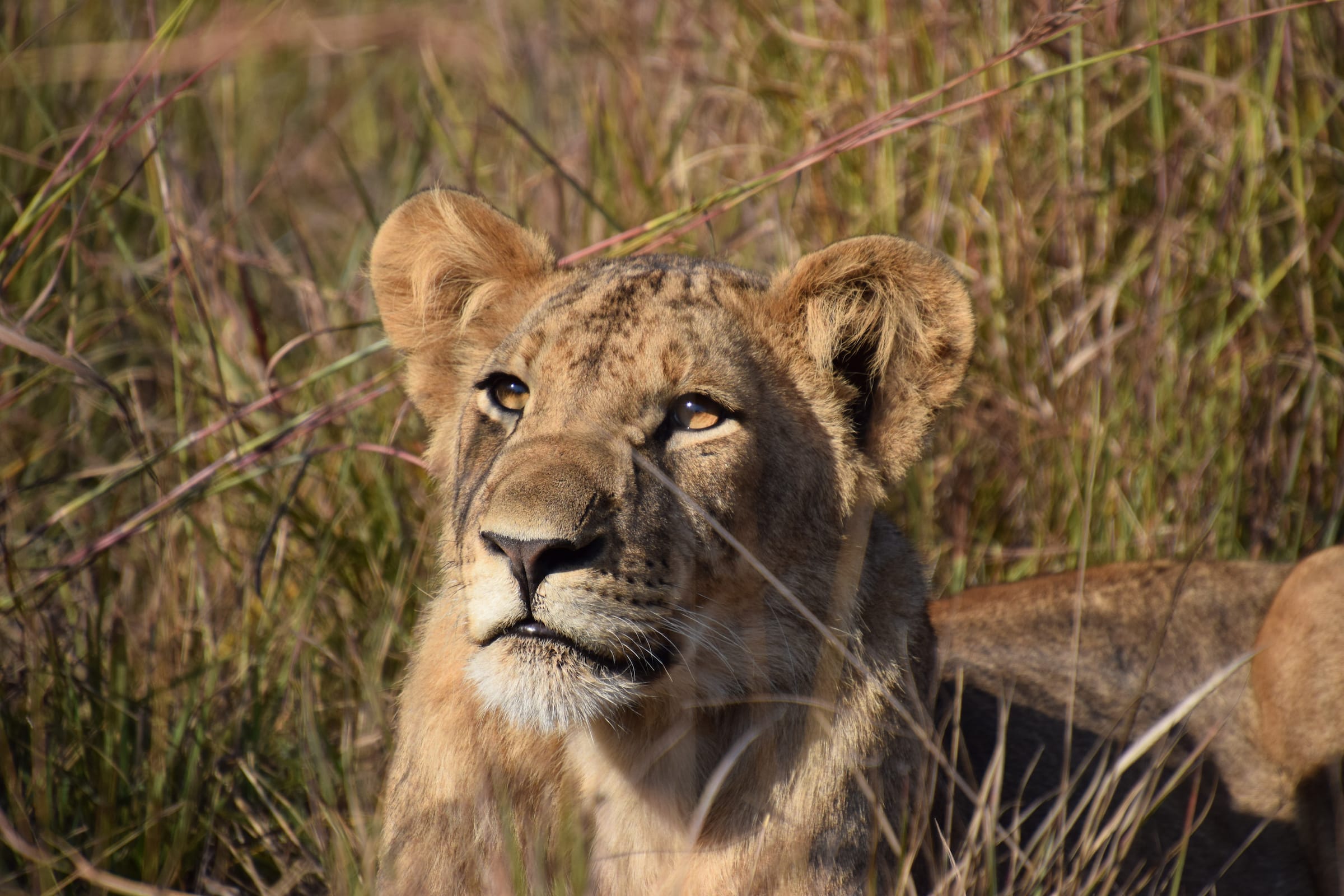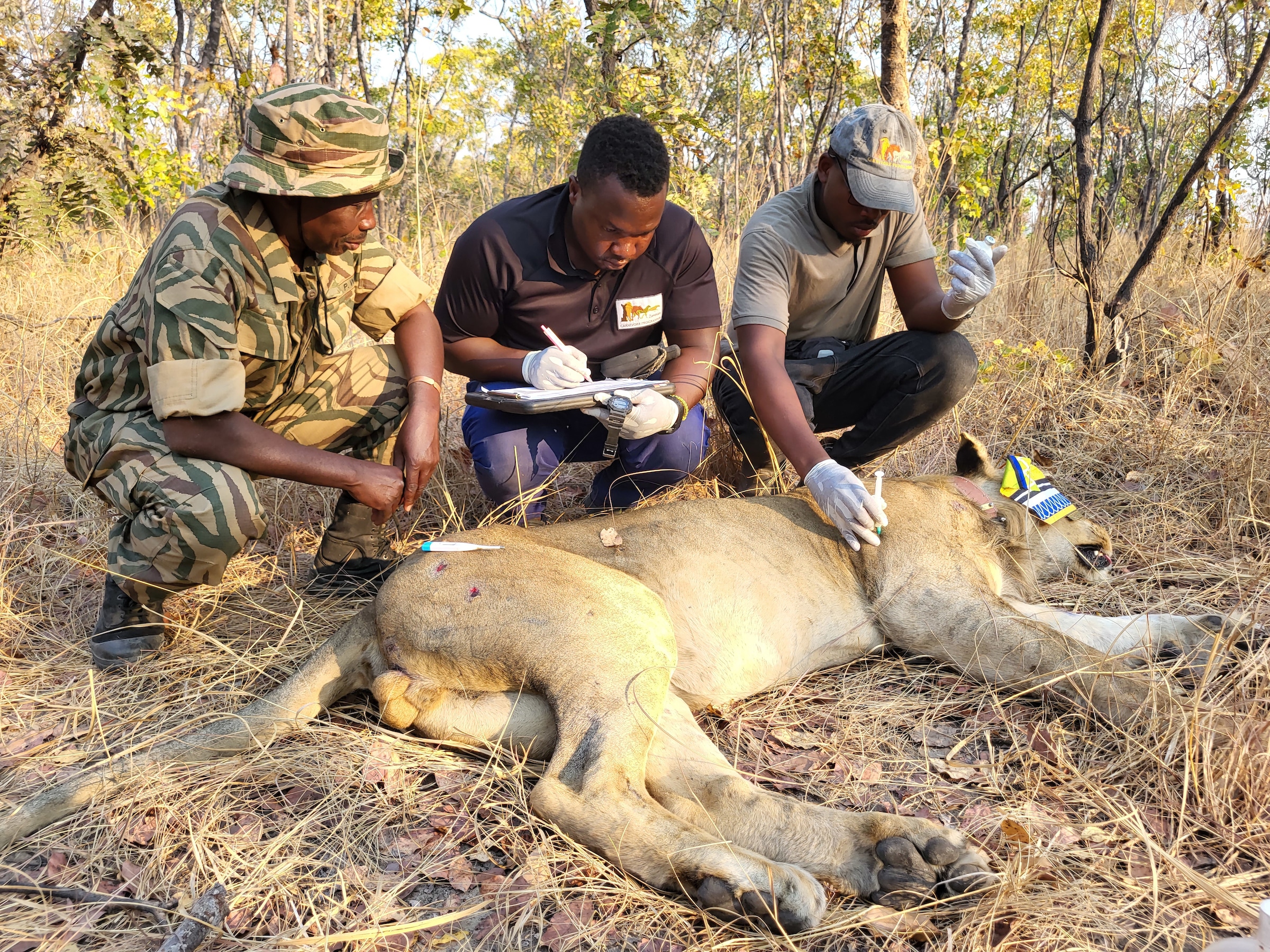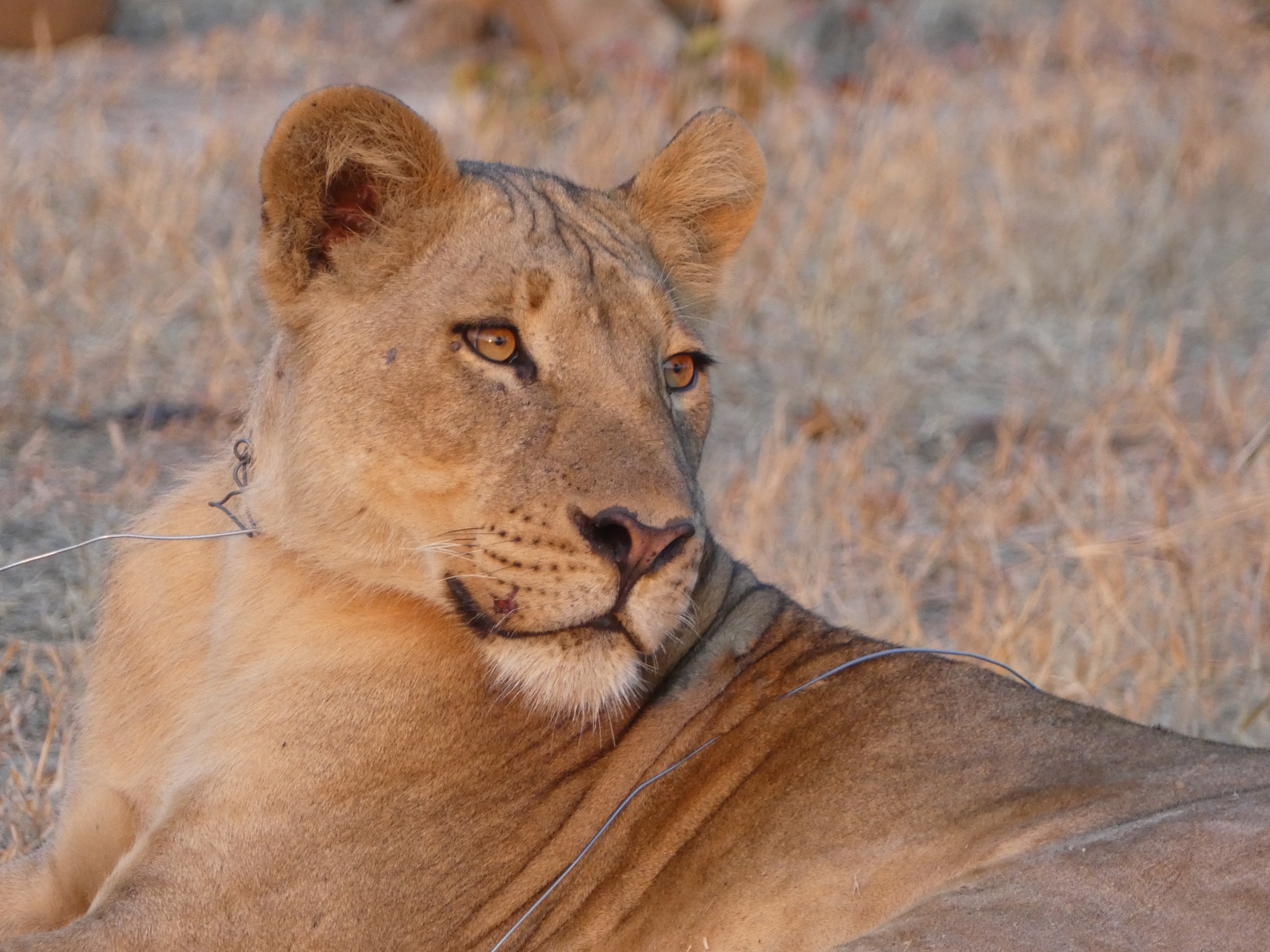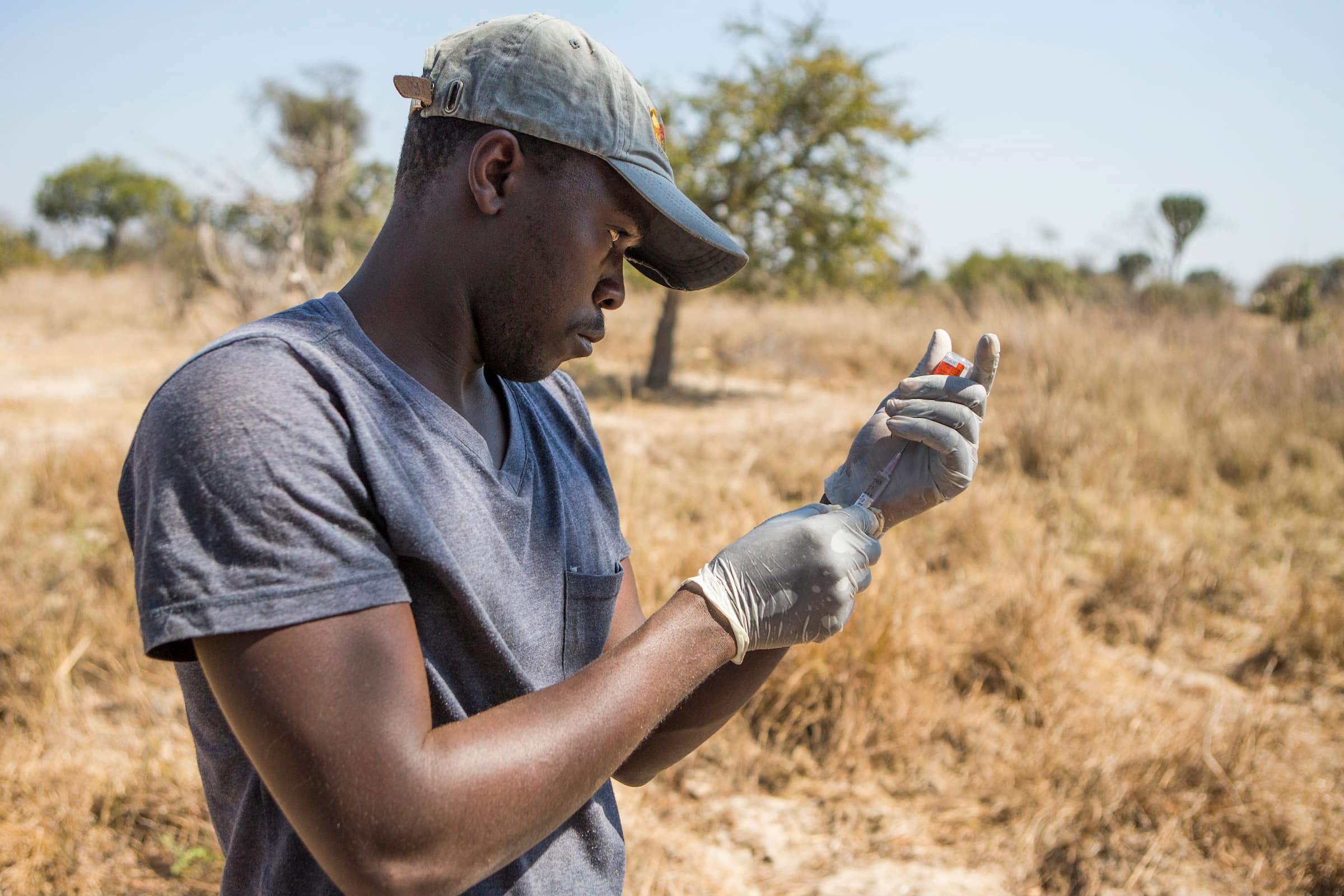African lions and other large carnivores are in decline across their range, and bushmeat snares pose one of the greatest threats—both from depleting lion prey species, and from deaths and severe injuries when lions are caught in snares as unintended targets.
While addressing the bushmeat crisis requires an array of long-term strategies ranging from increasing community benefits from wildlife to changing legislation and increasing protection, in the short term, there is still a need to mitigate the impacts of snares on lions. Removing snares from injured lions provides clear benefits to the individual animal, but given the effort and resources required, does it provide any benefits to the population at large? A recent study in Zambia provides evidence that it does both.
The study, led by Dr. Kambwiri Banda of the Zambian Carnivore Programme (ZCP), an LRF grantee, was published in the peer-reviewed scientific journal Biological Conservation as part of an invited special issue on the global impacts of snaring. ZCP collaborated with the Zambia Department of National Parks and Wildlife (DNPW), and Conservation South Luangwa in the Luangwa Valley. The Luangwa is Zambia’s premiere wildlife area and one of ten remaining lion strongholds in Africa, yet poaching is still a significant threat. Long-term intensive lion conservation work on these populations has included darting and treating snared lions, and while these animals often were important breeders with dependent cubs, the impact on the population at large had not been quantified.
Utilizing data on lion demography and snaring incidents collected from 2008 to 2015, researchers sought to evaluate the impact of snared lion rescues on the survival, reproduction, and population growth rates. Over a five-year period, information was collected on 386 individual lions. Prior work had evaluated the dynamics and trajectories of the population, and the mean population growth rate during this period was found to be positive, illustrating that the total number of individuals in the population was likely to increase over time. This data was then used as a marker for comparison as the researchers then systematically removed direct and indirect benefits of snare removal from the model and evaluated the resulting population trends.
Given many of the snared lions in the population had dependent cubs or produced litters for many years following their de-snaring, analyses first evaluated the impact if all snared lions had not been rescued and succumbed to their injuries, and dependent cubs had died or not been produced. The resulting mean population growth rates shifted to a negative trend, suggesting that the total number of lions in the population would have declined if no action was taken by ZCP and its partners to remove snares.
“While we knew that removing a snare from a lion had a positive impact on the individual animal, it was important to see if this work benefitted the population as a whole,” said ZCP’s Dr. Kambwiri Banda, the study’s lead author and a former WCN Scholar. “It was great to see that de-snaring can have strong benefits to the lion populations. Not only do our results suggest a positive impact on population growth from de-snaring, but they also suggest that de-snaring pride males helps keep them in the pride longer, thereby significantly improving cub and sub-adult recruitment.”
While de-snaring requires intensive effort and resources, the findings from ZCP’s study indicate that this work can provide a key conservation action to greatly reduce the effect of snaring on lion populations. In Zambia, these efforts have collaboratively expanded across the country’s large carnivore strongholds, with work ongoing between ZCP, the government, and their conservation partners. ZCP will continue protecting lion populations from the bushmeat crisis, with support from the LRF.






